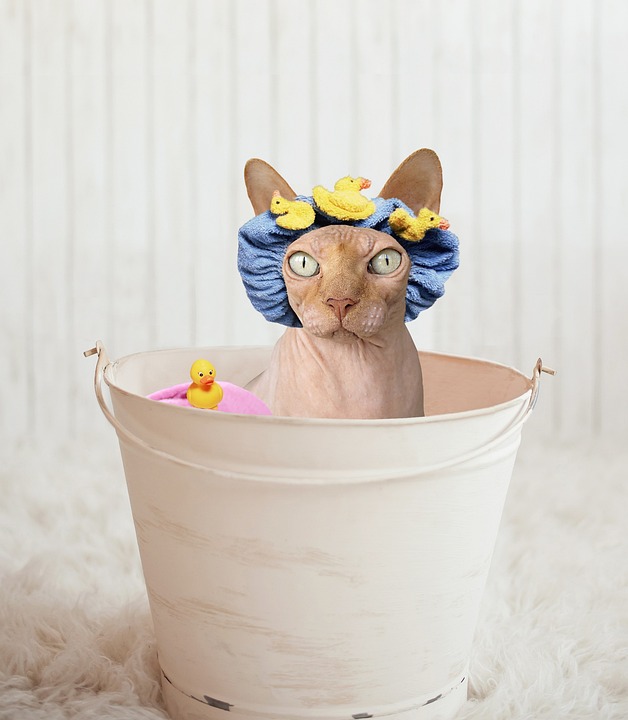Regular exercise is not only beneficial for humans but also for our feline friends. Maintaining a healthy weight is crucial for the overall well-being of cats, and exercise plays a vital role in weight management. In this article, we will explore the benefits of regular exercise for maintaining a healthy weight in cats.
Understanding the Link Between Exercise and Weight in Cats:
Exercise helps cats burn calories, which is essential for weight management. When cats engage in physical activities, they use up energy, resulting in the burning of calories. This helps them maintain a healthy metabolism and prevents weight gain.
Additionally, regular exercise promotes muscle tone and overall body condition in cats. It helps them build and maintain lean muscle mass, which is important for their strength and agility.
Preventing Obesity in Cats:
Obesity is a rising concern among cats. It can lead to various health issues, such as diabetes, heart disease, and joint problems. Regular exercise is an effective way to prevent obesity in cats.
By keeping them active, exercise helps cats maintain a healthy weight. It also improves their cardiovascular health and reduces the risk of weight-related health issues. Exercise stimulates their natural instincts and keeps them mentally stimulated, preventing boredom and overeating.
Effective Ways to Exercise Your Cat:
There are numerous ways to exercise your cat and keep them active and entertained.
Interactive playtime is an excellent way to engage your cat. Use toys, laser pointers, or feather wands to encourage them to chase, pounce, and jump. This not only helps them burn calories but also satisfies their predatory instincts.
Creating an indoor obstacle course for your cat to explore is another fun exercise option. Set up tunnels, ramps, and platforms for them to climb and jump on. This not only provides physical exercise but also mental stimulation.
Encouraging natural behaviors through hunting and foraging toys is a great way to keep your cat active. These toys simulate hunting behaviors and challenge your cat to work for their food, keeping them engaged and active.
Leash training is another option for supervised outdoor exercise. It allows your cat to explore the outdoors safely while getting exercise and mental stimulation.
Tailoring Exercise to Individual Cats:
When it comes to exercise, it is important to consider your cat’s age, breed, and overall health.
Senior cats may not be as active as younger ones, so it is important to modify their exercise routines accordingly. Gentle exercises, such as interactive playtime or low-impact activities, are ideal for older cats.
Cats with medical conditions may require special considerations. Consult with your veterinarian to determine the appropriate exercise routine for your cat’s specific needs.
Different cat breeds have varying exercise requirements. Some breeds, such as Bengals and Abyssinians, are known to be more active and may require more exercise than others. Research your cat’s breed to understand their specific exercise needs.
FAQs About Exercise and Weight Management in Cats:
Here are some frequently asked questions regarding exercise and weight management in cats:
– What are the signs that my cat is overweight?
Signs of overweight cats include a protruding belly, difficulty grooming themselves, and lethargy.
– How often should I exercise my cat?
Ideally, cats should engage in at least 20-30 minutes of exercise each day. However, the frequency and duration may vary depending on their age, health, and individual needs.
– Can indoor cats get enough exercise?
Yes, indoor cats can get enough exercise through interactive playtime, obstacle courses, and hunting toys. However, it is important to provide them with enough mental stimulation and physical activity.
– Are there any exercise restrictions for overweight or obese cats?
It is advisable to start with low-impact exercises and gradually increase the intensity as your cat loses weight. Consult with your veterinarian for a suitable exercise plan for overweight or obese cats.
– What other factors should I consider in conjunction with exercise for weight management in cats?
Along with regular exercise, feeding a balanced and appropriate diet is crucial for weight management. Consult with your veterinarian to determine the appropriate diet and portion sizes for your cat.
Conclusion:
Regular exercise is essential for maintaining a healthy weight in cats. It helps burn calories, maintain a healthy metabolism, and promote muscle tone. By preventing obesity and reducing the risk of weight-related health issues, exercise plays a vital role in the overall well-being of our feline friends. As responsible cat owners, it is important to prioritize exercise as part of our cat’s wellness routine.








